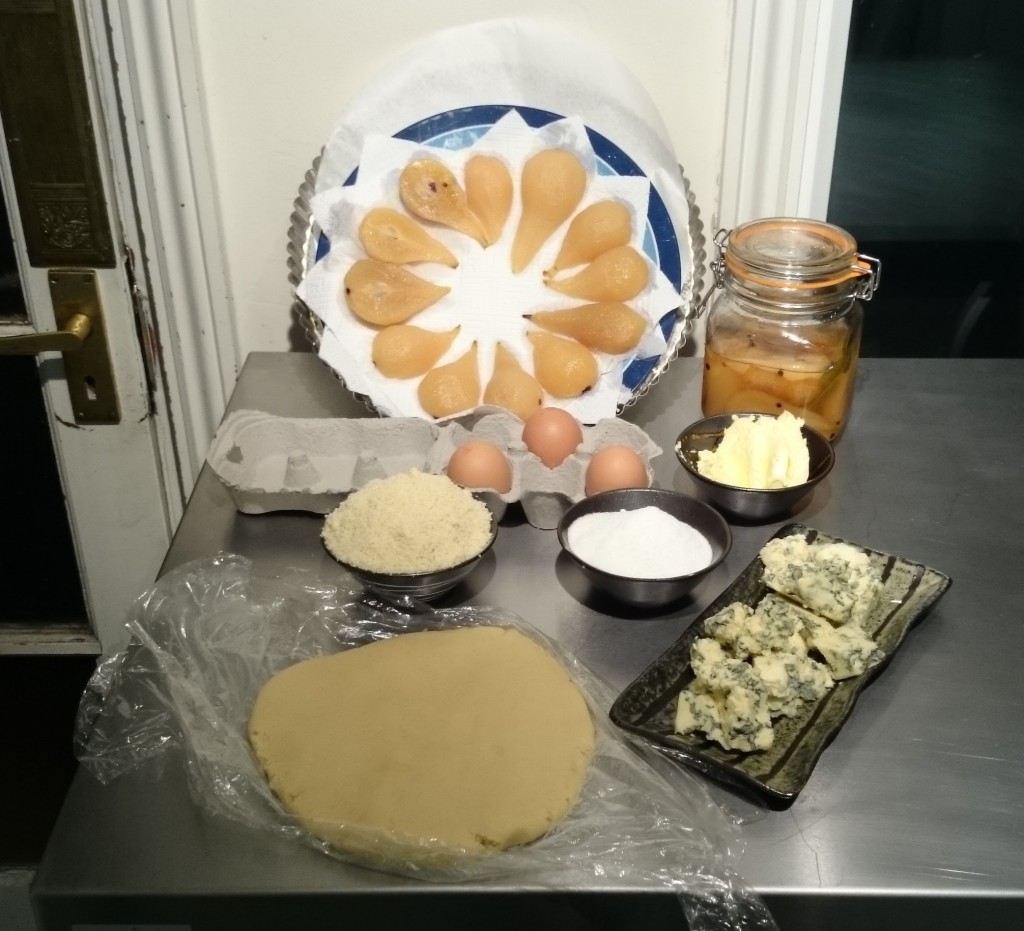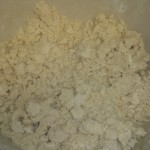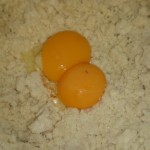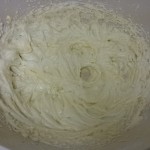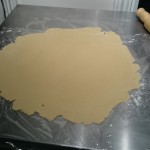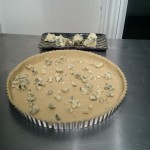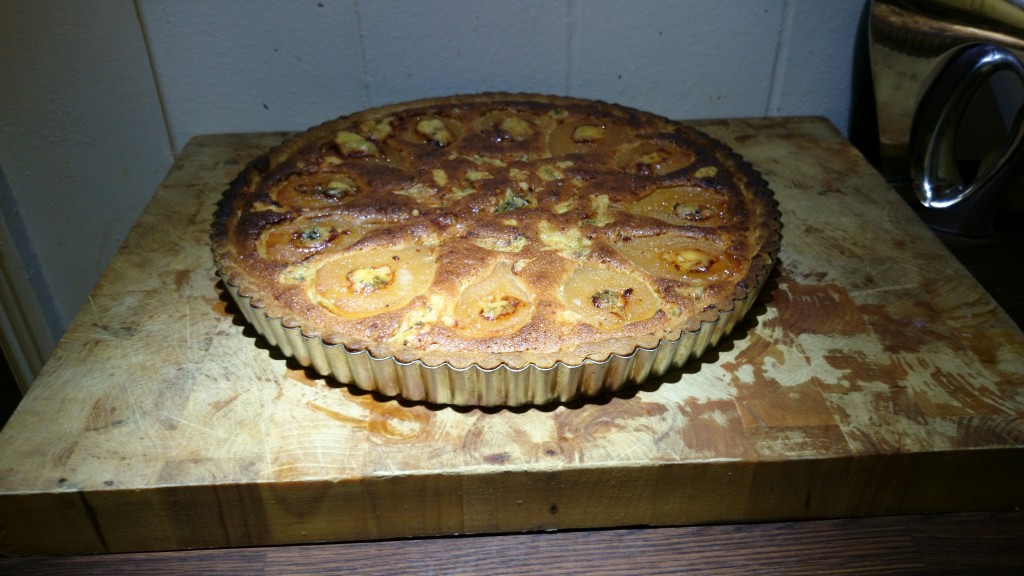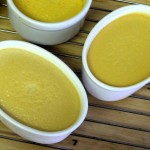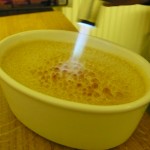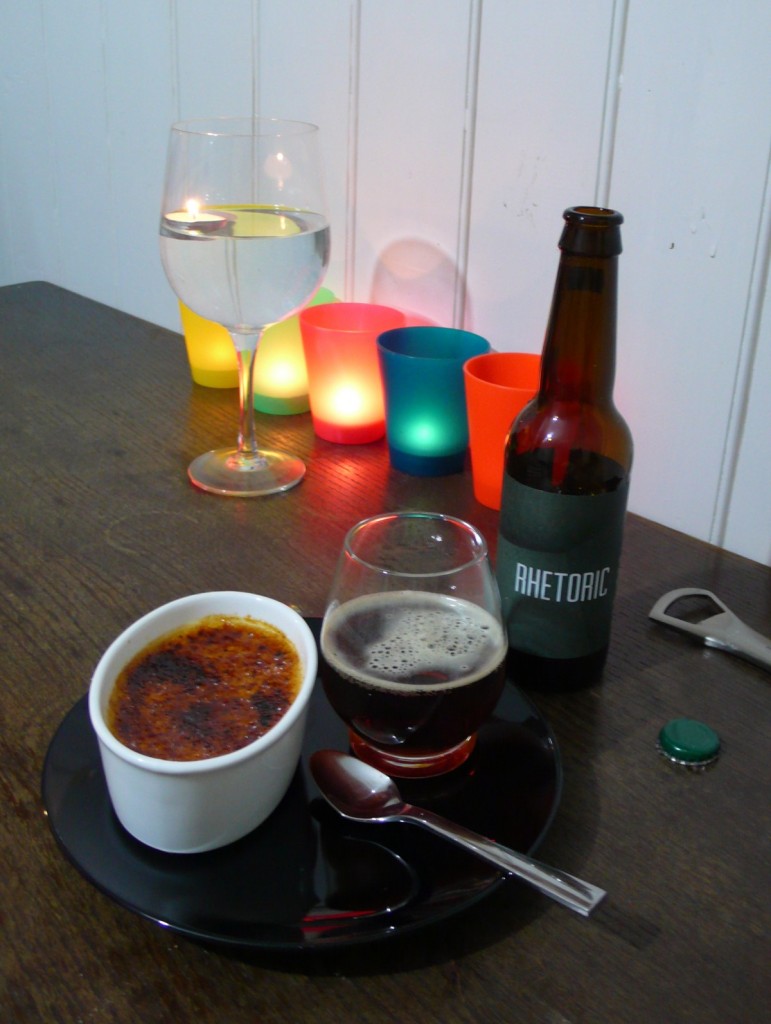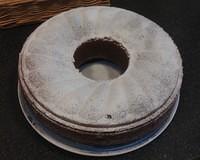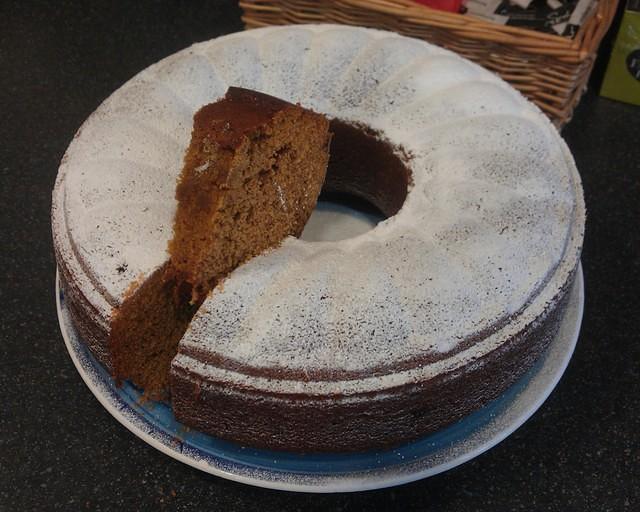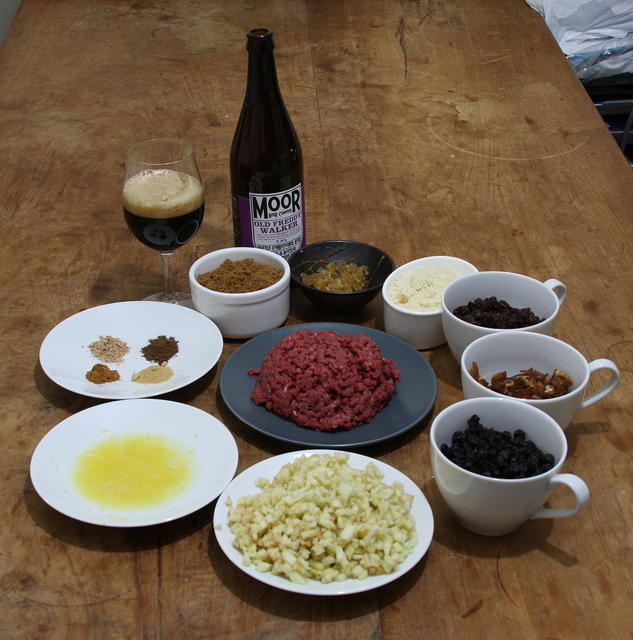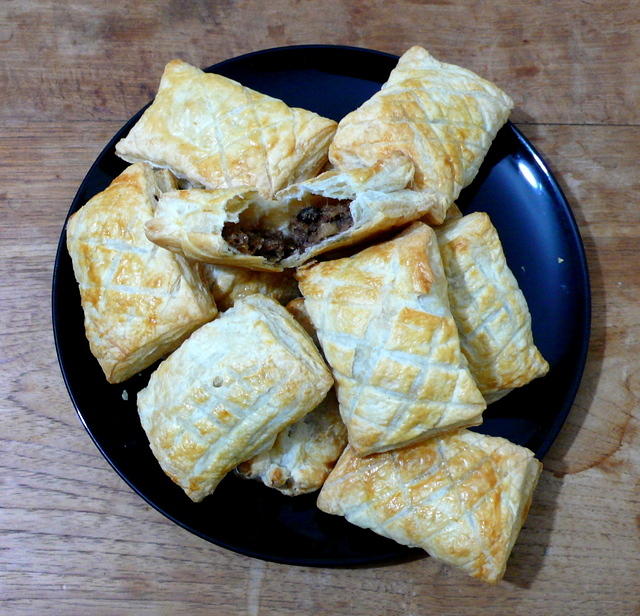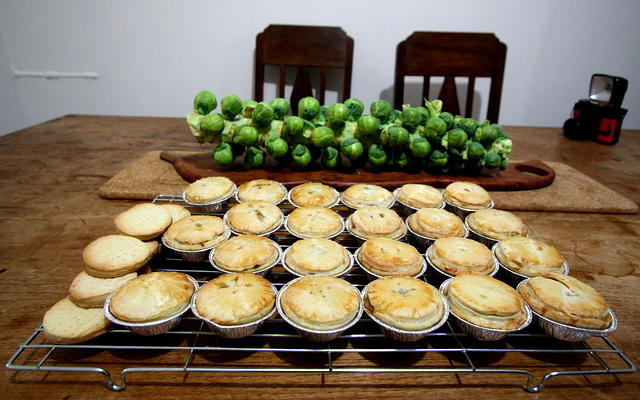 A super-successful off-the-cuff knock-up tart. I’d had in my mind for a few days the idea of combining strong blue cheese with my spiced pears in the form of a cake, tart, or pie. The concept being to effectively combine “dessert” and “cheese course” in one tasty dish. The end result went down very well with nearly everyone begging for a second helping.
A super-successful off-the-cuff knock-up tart. I’d had in my mind for a few days the idea of combining strong blue cheese with my spiced pears in the form of a cake, tart, or pie. The concept being to effectively combine “dessert” and “cheese course” in one tasty dish. The end result went down very well with nearly everyone begging for a second helping.
Ingredients
- Spiced Sweet-Vinegar Preserved Pears – in halves & de-cored
- Made roughly following the recipe from Pam Corbin’s River Cottage preserves handbook – mine contained some orange peel, bay leaves, and pepper-corns and no cinnamon. A similar recipe can be found here.
- 227g (half a pound) of Stilton (or similar) – rind trimmed off and roughly crumbled
- Base – a sweet shortcrust
- 225g plain flour
- 110g butter or lard
- 110g caster sugar
- 2 medium egg yolks
- Frangipane
- 125g caster sugar
- 85g soft butter
- 40g soft stilton (using some of the crumbled Stilton above)
- 3 medium eggs
- 125g ground almond
Method
To cut a long story short, follow this recipe here: Pear and frangipane tart recipe – this is what I’ve based mine on. The differences are:
- Some Stilton is used instead of butter in the frangipane, and this is creamed in with the butter & sugar.
- Crumble about a third of the remaining Stilton in the base of the tart before spreading in the frangipane mix.
- I simply popped my half pears in whole, cut-side-up.
- Crumble the remaining Stilton around the pears on top of the frangipane and pop a little knob of it into the core of each pear.
I found it only needed about 1 hour in a 190C conventional oven to be perfectly cooked.
To complement the tart I used about half a cup of the pear vinegar-syrup combined with half a cup of caster sugar, boiled to form a thick syrup and then flavoured with a small dash of smoky/peaty Caol Ila whisky. A slice of tart was served with a ball of good vanilla bean icecream, a crumble of Stilton, and a drizzle of syrup. I rarely make desserts… but after the response to this one I made it again using a lard pastry instead of butter – both work just fine, but I preferred the lard pastry. I’d suggest it is definitely best enjoyed warm and with a little cream or icecream to cut through the blue-cheesy richness.
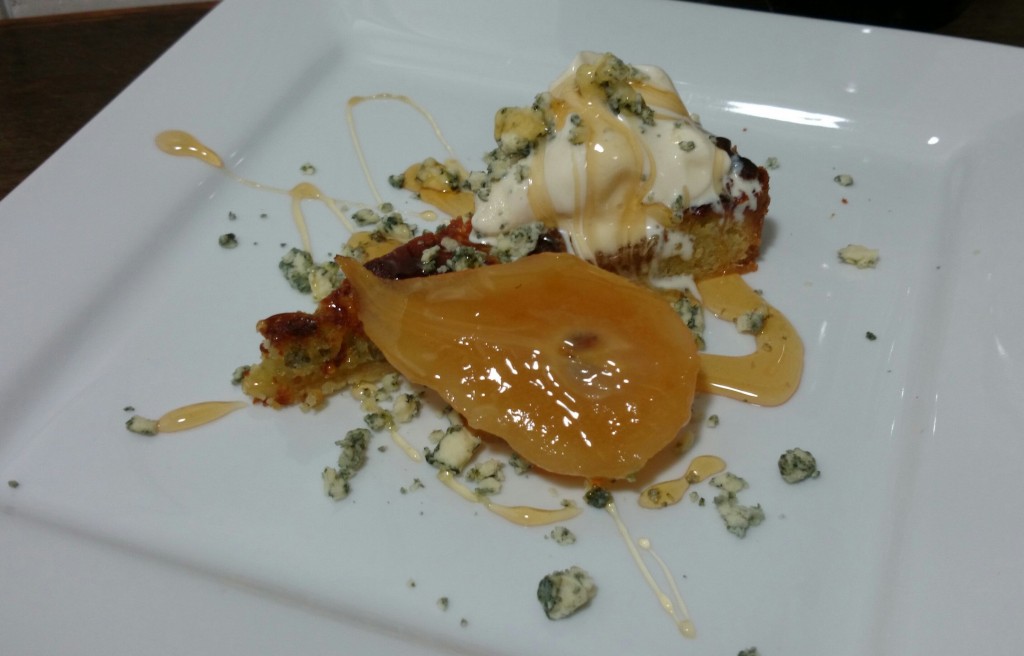
Stilton & Preserved Pear Frangipan …
Beer Pairing
To bring this more on-topic! Quite simply: what would go with a stinky-cheese-course is what will work here. Keeping in mind the tart adds another layer of richness and sweetness that’ll pull the guts out of a lot of beers. So go BIG. I’m thinking Brewdog Paradox series beers, or Harvistoun Ola Dubh. In fact that’s what I tried this with myself, the Harvistoun Ola Dubh 16 and it was an excellent complement to the dessert. On a different tack big barleywines and so-called “scotch ales” would also work – perhaps Adnams Tally Ho, or BrewDog Dogma. I’m pondering Yeastie Boys xeRRex, and if it’s intense peat smoked insanity would be too much… only one way to find out. If only I could get me some xeRRex!

… with Harvistoun Ola Dubh 16
